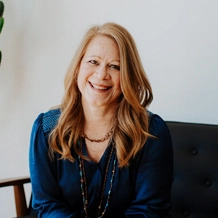Here’s How to Follow-Through On Your Estate Planning Resolution in 2014
If you made a New Year resolution to create an estate plan in 2014, give yourself a pat on the back. Most people never get around to making an estate plan, much less at a specific time period in which to do it.
However, making a resolution is much easier said than done. If you’ve made resolutions in the past that you have failed to follow through on, you know how hard it can be to accomplish your goals.
Fortunately, researchers have identified some specific steps you can take to give yourself a much better chance at following through on your estate planning resolution. By taking some simple steps, you can make sure that 2014 is the year your estate plan is finally finished.
Step 1. Make it a social event.
A resolution you tell yourself is very different from one you tell others. Humans are social animals, and we all feel the need to comply with social norms. When you tell others you are going to do something, you allow yourself to benefit from the positive social pressures that come with acting in a group setting.
An even better option is to get a few friends or family members to create an estate plan at the same time as you. When you share the experience with others going through the same thing, you give yourself a much greater chance of actually completing it.
Step 2. Give yourself a concrete timeframe.
A general resolution to “get in shape” or “be more generous” is never as good as one that gives specific dates and goals. For example, don’t resolve to “create an estate plan,” but instead, resolve to speak to an attorney by March 1st, or have your plan completed by September 15th. A specific date will help keep you honest and give your mind a ticking clock that can motivate you into action.
Step 3. Talk to someone who has gone through the estate planning process.
Resolving to do something is much different than actually doing it. The difference between the two things is taking an action instead of having just a thought. That action, that first step, is often the biggest barrier to accomplishing any goal.
To get past this barrier you can use what researchers call behavioral models. A behavioral model is simply identifying and copying the process that another person went through when he or she experienced the same problem as you.
In other words, you need a role model. Talk to people who have created a plan. Ask them questions about what they did, when they did it, and the kinds of issues they faced. Once you know how someone else has done it, you’ll have a mental framework that will give you an idea of what steps you need to take.
If you would like more information on estate planning, be sure to attend one of our estate planning workshops in January. You’ll be glad you did.
